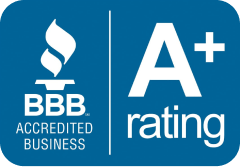Part D prescription drug coverage is available to Medicare recipients via either a separate PDP for those with traditional Medicare or a Medicare Advantage plan that provides comprehensive coverage of all Medicare-related costs, including prescription drugs, during the annual October 15–December 7 open enrollment period (MA-PD). Medicare enrolls 49 million of its 65 million beneficiaries in Part D plans in 2022, with 53% in MA-PDs and 47% in PDPs. This issue brief examines the Medicare Part D market in 2023 and highlights major patterns throughout time, with special attention paid to PDPs. (The Medicare Advantage market in 2023 is discussed in further detail in a separate report.) The brief also discusses how the Medicare Part D market may be affected by the Inflation Reduction Act of 2022. Assuming enrolment in June of 2022, weighted estimates are shown below (see Methods box for additional details).
Highlights for 2023
- In 2022, Medicare recipients will be able to select from among almost 60 different Medicare plans that include Part D prescription coverage, including 24 Medicare stand-alone drug plans and 35 Medicare Advantage drug plans.
- There will be 801 PDPs available across the country in 2023, a 3% rise from 2022. There will be no monthly fee for 191 of these PDPs for those who qualify for the Low-Income Subsidy (LIS) (benchmark plans).
- Based on current enrollment, the average premium for a Medicare Part D stand-alone drug plan is expected to rise to $43 per month in 2023 from $39 per month in 2022, an increase of 10% that is higher than both the current annual inflation rate and the Social Security cost-of-living adjustment for 2023.
- In 2023, average monthly premiums for the 16 national PDPs are expected to be between $6 and $111. Twelve national PDPs, including four with hikes of more than $10 per month in premiums, have announced rate increases for the upcoming year.
- Coinsurance for non-preferred pharmaceuticals will be between 40% and 50% (the maximum coinsurance rate allowed for the non-preferred drug tier) in 12 of the 16 national PDPs, which is similar to recent years but still significantly more than what most PDP participants will face for brands than for generics. About half of PDP members will have to pay 15% to 25% coinsurance rather than copayments for preferred brands, which can increase out-of-pocket expenses and make them less predictable. The majority of Medicare Part D PDP participants who keep their current coverage in 2023 will do so with a plan that has a maximum deductible of $505.
- Part D participants will pay no more than $35 per month for eligible insulin products in all Part D plans beginning in 2023, and there will be no cost-sharing for adult immunizations covered under Part D. This is because of a provision in the Inflation Reduction Act. In addition, beginning in 2023, manufacturers would be forced to provide rebates for prescription prices that increase faster than the rate of inflation, which might affect expenses for Part D users. In addition to allowing the federal government to negotiate drug prices for Medicare beneficiaries, the new law establishes a hard cap on out-of-pocket drug spending under Part D by eliminating the 5% coinsurance requirement for catastrophic coverage in 2024 and capping out-of-pocket drug spending at $2,000 in 2025. The negotiated prices for 10 Part D drugs will be made available to beneficiaries for the first time in 2026.
Part D Plan Availability
The Average Medicare Beneficiary Has a Choice of Nearly 60 Medicare Plans with Part D Drug Coverage in 2023
By 2023, Medicare recipients will have access to 24 PDPs, an increase of 1 from 2022. (Figure 1). Medicare recipients still have a wide range of choices when it comes to prescription drug coverage in 2023, even though the number of PDPs is significantly smaller than it was in 2007 (when there were, on average, 56 PDPs to choose from).
Average beneficiaries will have access to 35 MA-PDs in 2023, up from 30 in 2022. Medicare Advantage plans without the drug benefit, as well as Special Needs Plans and group plans, which are not available to all beneficiaries, are not included in this average. A median of 43 Medicare Advantage plans (including those that do not offer the Part D benefit) will be accessible to enrollees in that year.
A Total of 801 Medicare Part D Stand-Alone Prescription Drug Plans Will Be Offered in 2023
There will be a rise of 35 PDPs (5%) from 2022 to 2023, with a total of 801 PDPs given by 15 companies across the 34 PDP areas (plus another 10 PDPs in the territories) (Figure 2). Since Part D’s inception, the number of companies offering prescription medication coverage has rapidly decreased, from more than 30 in 2011 to less than 25 in 2015 and just 15 in 2023.
In 2023, like in previous years, PDP membership is predicted to be highly concentrated among a small number of companies. Considering enrollment as of June 2022, it is expected that four companies (CVS Health, Centene, UnitedHealth, and Humana) will control more than eight out of ten PDP subscribers (82%) in 2023. As of the year 2023, all 34 PDP regions will be serviced by all four companies.
There will be a wide variety of PDPs available to beneficiaries around the country, with the number of PDPs varying from 19 in New York to 28 in Arizona.
AVAILABILITY OF INSULIN FOR $35 PER MONTH
Covered insulin medications in all Part D plans will cost enrollees no more than $35 per month in 2023, thanks to a provision in the Inflation Reduction Act. In the deductible, initial coverage, and coverage gap stages of the Part D benefit, only participating enhanced Part D prescription plans cover insulin products at a monthly copayment of $35. This requirement builds on a current Innovation Center model, the Part D Senior Savings Model. There will be a total of 2,881 Part D plans in 2023 (33% more than in 2022), with 324 PDPs and 2,557 MA-PDs taking part (including segmented plans). The model will continue in 2023, and the monthly cap on insulin copayments will remain at $35 regardless of whether or not the beneficiary enrolls in a plan that participates in the program. Part D plans are only required to cover the insulin products listed on their formularies at the $35 monthly copayment rate, as per the new mandate of the Inflation Reduction Act.
Part D Premiums
Average Monthly Premiums for the 16 National PDPs Are Projected to Range from $6 to $111 in 2023
The predicted national average monthly PDP premium for 2023 is $43, up 10% from 2022’s $39, based on enrollment in June 2022 (Table 2). This rate of growth is higher than both the current annual inflation rate and the Social Security cost-of-living adjustment for 2023. After taking into consideration enrollment decisions made by new enrollees and plan changes made by existing enrollees, it is expected that the actual average weighted premium for 2023 will be less than this predicted average. According to data from CMS, in 2023, the average premium for basic Part D coverage provided through PDPs and MA-PDs is expected to be $31.50. Because we only consider PDPs (not MA-PDs, which have far lower premiums than PDPs) and because we include PDPs that provide both basic and enhanced coverage (enhanced plans, which will make up 60% of all PDPs in 2022) in our estimate, we have a larger premium estimate.
Like prior years, 2023 PDP premiums will vary considerably from plan to plan. The annual premium differential between the PDP with the highest premium and the PDP with the lowest premium is over $1,200 across the 16 national PDPs. The maximum cost of AARP MedicareRx Preferred per month is $111, which is almost $1,300 per year. SilverScript SmartSaver has a minimum monthly premium of $6 or $67 per year.
The premium increase or decrease from 2022 to 2023, averaged across areas and weighted by 2022 enrollment, varies greatly amongst PDPs, as do the actual monthly premium levels for 2023. Cigna Extra Rx (+$13, 26%), Elixir RxSecure (+$12, 35%), AARP MedicareRx Preferred (+$12, 12%), and Humana Walmart Value Rx Plan (+$11, 46%) are only four of the 16 national PDPs that are increasing their average monthly prices.
Two of the three most popular PDPs, ranked by total PDP enrollment, have recently announced increases in their monthly premiums.
- The average monthly premium for the largest PDP, CVS Health’s SilverScript Choice, will rise from $31 in 2022 to $33 in 2023, an increase of $2 (+8%). In 2022, SilverScript Choice had a total of 3.0 million members, of which 1.4 million were not enrolled in the LIS.
- Wellcare Value Script, the second largest PDP in 2022 with 2.3 million subscribers, including 2.2 million non-LIS participants, will see its average monthly premium drop from $12 in 2022 to $10 in 2023, a decrease of $2 (-19%).
- The average monthly premium for AARP MedicareRx Preferred, the third largest PDP, will rise from $99 in 2022 and 2023 to $111 in 2023 and 2024, an increase of $12 (+12%). In 2023, this monthly premium is higher than any other national PDP. If enrolled in Part D in 2016, a person paying the average monthly premium for AARP MedicareRx Preferred in 2016 would spend $61. In 2023, a person paying that same premium would pay approximately $50 more each month, or over $600 more per year.
Average Monthly Premiums Are Higher for PDPs Offering Enhanced Benefits and Lower or No Deductibles
According to June 2022 enrollment data, the vast majority of non-LIS PDP subscribers (75%) are enrolled in enhanced plans, and the majority of Part D stand-alone prescription plans in 2023 (62%) will offer improved features for a higher average monthly premium. Compared to the standard benefit structure, enhanced benefits may feature a lower (or even zero) deductible, decreased cost sharing, or a greater starting coverage level. In 2023, the average premium for a PDP with a basic benefit is $37 per month, while the average premium for a PDP with enhanced benefits is $48 per month, a difference of $10 (28 percent) (Figure 5).
Eighty-four percent of PDPs will require a deductible in 2023, with seven out of ten PDPs (70%) requiring the maximum deductible of $505. Add this to your 2023 Medicare Part A deductible of $1,600 and your Medicare Part B deductible of $226. In 2023, the average deductible for PDPs is expected to be $408. In 2023, PDPs with no deductible will cost an average of $99 per month, which is more than three times the cost of PDPs with a standard deductible of $30 per month and 66% more than PDPs with a partial deductible of $60 per month.
More than six out of ten Medicare Part D enrollees without low-income subsidies would see premium increases in 2023 if they keep their current plan.
More than six in ten Medicare Part D enrollees will see an increase in their monthly premium in 2023 if they stay in their current plan, with 8.2 million of the 13.2 million Part D PDP enrollees responsible for paying the entire premium (which excludes Low-Income Subsidy (LIS) recipients) (Figure 6).
Despite a $4 increase in the average weighted monthly PDP premium between 2022 and 2023 (from $39 to $43), 2.1 million non-LIS participants (16%) will suffer a premium increase of $10 or more per month, or at least $120 more yearly if they continue with their current plan. Comparatively few subscribers outside of the LIS (0.1 million, or 1%) will receive a premium cut of a similar size. There are 4.2 million people who are not enrolled in the Low Income Health Plan (LIS) and who are expected to pay premiums of at least $60 per month (or more than $700 per year) if they keep their current plans. Among these people, 1.6 million (12%) are expected to pay premiums of at least $100 per month (or more than $1,200 per year). Participants in the AARP MedicareRx Preferred PDP, as well as participants in many Blue Cross/Blue Shield PDPs and other PDPs that are available in certain regions but not nationwide, fall into this category.
Part D Cost Sharing
Part D Enrollees Pay Much Higher Cost Sharing for Brands and Non-preferred Drugs Than for Generic-Tier Drugs, and a Mix of Copays and Coinsurance for Different Formulary Tiers
Cost-sharing for Part D enrollees in 2023 will consist of a combination of copayments and coinsurance for different formulary tiers, with substantially greater amounts for brands and non-preferred medications (which can contain both brands and generics) than for generic tier pharmaceuticals. Preferred generics, generics, preferred brands, non-preferred medicines, and specialty drugs make up the five tiers of a typical Part D formulary.
In 2023, the median standard cost-sharing across all PDPs will be $1 for preferred generics and $5 for generics, $44 for preferred brands (up from $42 in 2022), 45% coinsurance for non-preferred drugs (up from 40% in 2022; the maximum allowed is 50%), and 25% coinsurance for specialty drugs (the same as in 2022; the maximum allowed is 33%).
In 2023, as shown in Figure 7, Part D enrollees will pay significantly more out-of-pocket for brand and non-preferred drugs than they will for generic drugs on the same tier.
The cost-sharing amounts for different tiers of the formulary are both increasing and decreasing for 2023 across plans. Changes that stand out include:
- In 2023, just five national PDPs will have no monthly copays for preferred generics, down from seven plans in 2022.
- Seven of the 16 national PDPs are raising cost-sharing amounts for non-preferred medications (while decreasing in only 1 of the 16). In 2023, the coinsurance for non-preferred medications will be between 40% and 50% (the maximum allowed for this tier) in 12 of the 16 national PDPs.
- In 2023, nearly half of all PDP enrollees (44%) will pay a coinsurance of 15% to 25% for preferred brands, up from 34% in 2022. When paying coinsurance instead of a set copayment, it’s more difficult to anticipate exactly how much money will need to be paid out of pocket for medications because the amount relies on the drug’s list price.
Low-Income Subsidy Plan Availability
In 2023, a Smaller Number of Part D Stand-Alone Drug Plans Will Be Premium-Free to Enrollees Receiving the Low-Income Subsidy (Benchmark Plans) Than in Any Year Since Part D Started
Low-income and low-asset registrants may qualify for premium and cost-sharing reductions under the Part D LIS program. Of the over 13 million people enrolled in Medicare Part D, nearly 7 million (57%) receive LIS from their MA-PD and nearly 5 million (43%) receive it from their PDP.
In 2023, only 191 PDPs, or about a quarter of all PDPs, will be premium-free benchmark plans, meaning they are available to Medicare Part D enrollees paying no monthly premium because they qualify for the Low-Income Subsidy (LIS). This is a lower percentage than in any year since Part D’s inception in 2006. (Figure 8). In 2023, regions will have anywhere from three to eight different benchmark plans to choose from (Table 1). By 2023, it is expected that CVS Health, Centene, Humana, Cigna, and UnitedHealthcare will collectively manage 89% of the 5.5 million LIS PDP subscribers (based on June 2022 enrollment).
For 2023, the average (weighted by Medicare enrollment) number of PDP alternatives for LIS members is five, which is about one-fifth the average number of PDP options overall and the lowest average number of benchmark plan options in any year since Part D began. Participants in the LIS program are free to select any plan available in their region, albeit they are responsible for contributing to the cost of their premium if they opt for a plan that is not the regional benchmark. Unless they move or are reassigned by CMS to premium-free plans, roughly one-quarter (24%) of all LIS PDP enrollees eligible for premium-free Part D coverage (1.0 million LIS enrollees) will pay Part D premiums averaging $25 per month in 2023.
Discussion
Medicare Part D consumers without low-income subsidies will see premium and other cost increases in 2023 if they remain in their current stand-alone prescription plan, according to our research of the Medicare Part D stand-alone drug plan landscape for that year. During the current annual open enrollment period, Medicare recipients can select from a wide variety of prescription drug plans (PDPs; 24 plans on average) and Medicare Advantage drug plans (usually several dozen) (35 MA-PD plans, on average). Participants in Medicare Part D who qualify for low-income subsidies have access to a smaller pool of benchmark plan options. Some LIS participants may have a harder time finding a benchmark plan that covers their prescriptions without paying a premium if the number of available plans is reduced.
Part D enrollees in stand-alone drug plans may be eligible for lower premiums and other costs for their drug coverage if they choose to remain in their current plans, but nearly three-quarters of non-LIS PDP enrollees will see higher premiums if they choose to remain in their current plans, and many will also see higher deductibles and cost-sharing for covered drugs. The majority of Medicare Part D PDP subscribers who do not switch plans in 2023 will have a deductible of $505 and pay substantially more out of pocket for brand-name pharmaceuticals than they do for generic ones, with some paying as much as 50% in coinsurance for non-preferred medications. The monthly premium, deductible, and cost-sharing for some beneficiaries could be reduced by switching to a lower-premium plan, while the requirements of others might be better served by a higher-premium plan at a lower total cost.
Other ABBY’S CONSULTING SERVICES analysis finds that most Medicare beneficiaries did not compare plans during a recent open enrollment period, and that most Part D enrollees did not compare the coverage offered by their drug plan to that of other drug plans. This is despite the fact that both plan coverage and costs, as well as beneficiaries’ health needs, can vary from year to year. Plans vary from one another in many aspects beyond premiums, including cost sharing, deductibles, covered medicines, and pharmacy networks, making it challenging to compare and select the best Part D plan for an individual’s needs. There are many different Medicare Advantage drug plans to choose from, each with their own set of pros and cons. Some of these include cost sharing for medical services, provider networks, and coverage and fees for supplemental benefits in addition to medication coverage. All Part D enrollees could benefit from the ability to compare plans during open enrollment because Part D plans differ in various ways that can have a major effect on an enrollee’s access to prescriptions and out-of-pocket drug spending.







